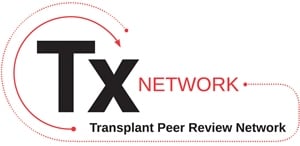Journal list menu
Export Citations
Download PDFs
COVER IMAGE
American Journal of Transplantation: Volume 22, Number 12, December 2022
- First Published: 02 December 2022
On the cover: This final issue of 2022 centers on cellular therapeutics in transplantation. Hirai and colleagues (page 3061) engineer a strategy to neutralize the negative impact of calcineurin inhibitors on regulatory T cell (Treg) number and function. In a mouse model, administration of mutant IL-2 after transfer of Tregs bearing a mutant IL-2 receptor selectively stimulated transduced Tregs and resulted in heart allograft tolerance. Arcolino et al. (page 2791) exploited their ability to isolate, from the urine of preterm neonates, a population of kidney stem/progenitor cells. Delivery to adult human kidneys during normothermic perfusion induced de novo expression of a developmental transcription factor and upregulation of regeneration markers in proximal tubular cells. And finally, Luijmes et al. (page 2723) succinctly review the panoply of stem cell-based therapies to regenerate suboptimal organs during ex vivo perfusion. Covering hearts, lungs, livers, and kidneys, they delineate the cell products tested, their route of administration, mechanisms of action, and accrued record of safety and efficacy.
THE AJT REPORT
AJT Digest for Patients: Their Own Window into Key Research
- Pages: 2713-2714
- First Published: 02 December 2022
In this month's installment of “The AJT Report,” we announce the launch of The AJT Digest for Patients, our new source of research information curated and designed specifically for transplant recipients. We also report on positive news concerning the use of living unrelated donor kidneys for pediatric kidney transplants.
LITERATURE WATCH
RASA2 a new gatekeeper for TCR signaling
- Page: 2715
- First Published: 02 December 2022
RASA2 is a new checkpoint inhibitor suppressing T cell activation and promoting T cell exhaustion.
EDITORIALS
Pure laparoscopic or robotic liver transplantation: Feel the movement?
- Pages: 2717-2718
- First Published: 29 August 2022
This editorial examines minimally invasive liver transplantation and discusses its future. See Dokmak et al (page 3069).
Humans versus machines: Who learns faster? Editorial regarding: “Machine learning-supported interpretation of kidney graft elementary lesions in combination with clinical data”
- Pages: 2719-2720
- First Published: 25 October 2022
The study by Labriffe et al (page 2821) offers an innovative approach, supported by artificial intelligence, to integrate histological and clinical information.
Tracheal replacement: A never–ending search
- Pages: 2721-2722
- First Published: 20 August 2022
Successful application of cryopreserved aortic homografts for long segment tracheal replacement is a significant contribution to the field. See Martinod et al (page 2961).
MINIREVIEW
The current status of stem cell-based therapies during ex vivo graft perfusion: An integrated review of four organs
- Pages: 2723-2739
- First Published: 27 July 2022
This mini-review of pre-clinical studies describes the current landscape of stem-cell based therapies administered during ex vivo organ perfusion and urges the initiation of clinical trials.
COMPREHENSIVE REVIEWS
Management of cardiac diseases in liver transplant recipients: Comprehensive review and multidisciplinary practice-based recommendations
- Pages: 2740-2758
- First Published: 31 March 2022
This multidisciplinary effort outlines the significant burden of cardiac disease in liver transplant recipients and provides consensus, practice-based recommendations to optimize management.
Practice and challenges for organ donation after medical assistance in dying: A scoping review including the results of the first international roundtable in 2021
- Pages: 2759-2780
- First Published: 13 September 2022
This comprehensive overview of organ donation after medical assistance in dying and its attendant issues reports an increasing frequency of this practice internationally.
PERSONAL VIEWPOINTS
The 21st Century Cures Act and psychosocial electronic documentation in solid organ transplantation: Potential harms and practical strategies
- Pages: 2781-2785
- First Published: 16 July 2022
Emerging technologies and ethics—exogenic chimeric humanized organs
- Pages: 2786-2790
- First Published: 02 September 2022
This Personal Viewpoint outlines the scientific and ethical issues associated with the engineering of human-animal chimeras to generate life-saving organs for transplantation.
ORIGINAL ARTICLES
Basic Science
De novo SIX2 activation in human kidneys treated with neonatal kidney stem/progenitor cells
- Pages: 2791-2803
- First Published: 01 August 2022
Humanized anti-IL-26 monoclonal antibody as a novel targeted therapy for chronic graft-versus-host disease
- Pages: 2804-2820
- First Published: 23 August 2022
In an allogeneic graft-versus host disease (GVHD) mouse model, IL-26 markedly increases neutrophil levels and augments T helper 17 responses while in a xenogeneic model, humanized neutralizing anti-IL-26 monoclonal antibody impedes the development of chronic GVHD with preservation of graft-versus-leukemia effect.
Clinical Science
Machine learning-supported interpretation of kidney graft elementary lesions in combination with clinical data
- Pages: 2821-2833
- First Published: 05 September 2022
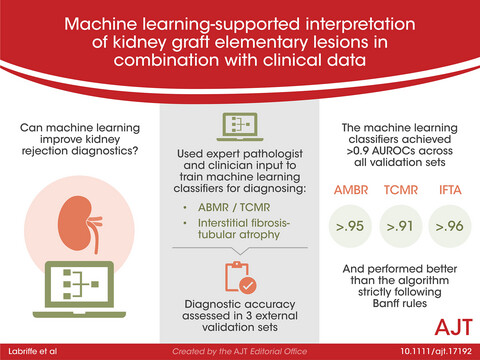
Machine learning algorithms were trained and validated for the automated interpretation of both Banff scores and clinical data and suggest differential weights for elementary lesions, depending upon the diagnosis. Mengel comment page 2719.
Maximizing the use of potential donors through increased rates of family approach for authorization
- Pages: 2834-2841
- First Published: 05 September 2022
Analysis of donor referrals reveals substantial variation among organ procurement organizations in rates of approach, authorization, and organ recovery and suggests that high authorization rates may result from selective approach practices while high donation rates may result from aggressively approaching families for authorization.
Influence of organ quality on the observed association between deceased donor kidney procurement biopsy findings and graft survival
- Pages: 2842-2854
- First Published: 10 August 2022
This retrospective analysis of U.S. registry data demonstrates that deceased donor kidney procurement biopsy findings are associated with post-transplant outcomes in a subset of kidneys that are likely to be both biopsied and transplanted.
The new French kidney allocation system for donations after brain death: Rationale, implementation, and evaluation
- Pages: 2855-2868
- First Published: 24 August 2022
This study of the French Kidney Allocation Scheme strongly advocates for allocation areas of sufficient size, combined with multiplicative interactions among allocation criteria, to optimally balance competing considerations.
Scandiatransplant acceptable mismatch program—10 years with an effective strategy for transplanting highly sensitized patients
- Pages: 2869-2879
- First Published: 28 August 2022
The acceptable mismatch program administered by Scandiatransplant, the Nordic organ allocation organization, achieves 10-year graft survival for highly sensitized patients that is comparable to non-sensitized patients.
Criteria for prediabetes and posttransplant diabetes mellitus after kidney transplantation: A 2-year diagnostic accuracy study of participants from a randomized controlled trial
- Pages: 2880-2891
- First Published: 01 September 2022
Analyses of data from kidney transplant recipients who participated in a randomized controlled trial show that the oral glucose tolerance test is indispensable to diagnose diabetes and pre-diabetes because concordance between hemoglobin A1c and fasting plasma glucose tests is poor.
Delirium, changes in cognitive function, and risk of diagnosed dementia after kidney transplantation
- Pages: 2892-2902
- First Published: 18 August 2022
Post-kidney transplant delirium, a preventable surgical complication, is associated with improved executive function in the first two years but worse executive function thereafter, as well as a seven-fold greater risk of diagnosed dementia.
Comparative outcomes for over 100 deceased donor kidney transplants from SARS-CoV-2 positive donors: A single-center experience
- Pages: 2903-2911
- First Published: 29 September 2022
A single center retrospective study comparing kidney transplant outcomes from SARS-CoV-2 positive versus negative donors finds no differences in rates of post-transplant COVID diagnoses, metrics of allograft function, and graft or patient survival.
Awarding additional MELD points to the shortest waitlist candidates improves sex disparity in access to liver transplant in the United States
- Pages: 2912-2920
- First Published: 24 July 2022
Liver Simulated Allocation Modeling shows that awarding additional MELD points to the shortest in stature liver transplant candidates improves sex-based disparities in waitlist outcomes.
Assessment of donor quality and risk of graft failure after liver transplantation: The ID2EAL score
- Pages: 2921-2930
- First Published: 02 September 2022
The ID2EAL score, a novel and objective score comprised of donor type, cause of death, insulin-dependent diabetes, serum creatinine, age, weight and height outperforms the Donor Risk Index in predicting one-year graft failure, especially in the current era.
UNOS policy change benefits high-priority patients without harming those at low priority
- Pages: 2931-2941
- First Published: 17 August 2022
The updated heart allocation policy is associated with improved waitlist outcomes in high-acuity patients, no significant difference in waitlist outcomes for low-acuity patients, and no change in one-year post-transplant survival.
Characteristics and outcomes of heart transplant recipients with a pretransplant history of malignancy
- Pages: 2942-2950
- First Published: 01 September 2022
Heart transplant recipients with pre-transplant malignancy, compared to those without, show significantly higher incidence of post-transplant malignancies but comparable overall survival and long-term outcome.
Long-term follow-up of acute and chronic rejection in heart transplant recipients from hepatitis C viremic (NAT+) donors
- Pages: 2951-2960
- First Published: 02 September 2022
A prospective study comparing patients who received heart transplants from hepatitis C viremic and non-viremic donors finds no differences in acute or chronic rejection, graft dysfunction or mortality.
Airway replacement using stented aortic matrices: Long-term follow-up and results of the TRITON-01 study in 35 adult patients
- Pages: 2961-2970
- First Published: 02 July 2022
The TRITON-01 study confirms that airway replacement using stented aortic matrices can be proposed as usual care. Patterson and Rendina comments page 2721.
Expected effect of the lung Composite Allocation Score system on US lung transplantation
- Pages: 2971-2980
- First Published: 23 July 2022
Simulations of continuous distribution scenarios show that adoption of a framework that equally weighs waitlist and posttransplant survival and minimally weighs placement efficiency decreases waitlist deaths and maximizes posttransplant survival.
Place-based heterogeneity in lung transplant recipient outcomes
- Pages: 2981-2989
- First Published: 12 August 2022
Lung transplantation for interstitial lung disease in idiopathic inflammatory myositis: A cohort study
- Pages: 2990-3001
- First Published: 21 August 2022
A retrospective multicenter study shows that patient survival after lung transplantation for myositis-related interstitial lung disease is comparable to that reported in international registries for all causes combined.
Prognostic implications of and clinical risk factors for acute lung injury and organizing pneumonia after lung transplantation: Data from a multicenter prospective cohort study
- Pages: 3002-3011
- First Published: 29 August 2022
Data from a multi-center prospective cohort shows that the development of late, defined as more than 90 days after transplantation, but not early acute lung injury or organizing pneumonia confer worse outcomes for recipients.
Antiviral toxicities in pediatric solid organ transplant recipients
- Pages: 3012-3020
- First Published: 16 August 2022
Among pediatric solid organ transplant recipients, prophylactic use of valganciclovir is associated with neutropenia and kidney injury in the first year after transplant.
Epidemiology of surgical site infections after solid organ transplants in the period 2015–2019: A single-center retrospective cohort study
- Pages: 3021-3030
- First Published: 02 September 2022
A single-center epidemiologic study shows that surgical site infections continue to adult solid organ transplants and are associated with increased transplant hospitalization, length of stay, graft failure, and mortality.
Epidemiology and outcomes of bone and joint infections in solid organ transplant recipients
- Pages: 3031-3046
- First Published: 29 August 2022
In solid organ transplant recipients, bone and joint infections, rare complications with subtle clinical presentation, high morbidity and frequent relapse, require special attention from treating physicians.
Pediatric solid organ transplant recipients demonstrate robust cell-mediated and humoral responses to three doses of mRNA SARS-CoV-2 vaccine
- Pages: 3047-3052
- First Published: 09 September 2022
SARS-CoV-2-specific interferon-gamma response and antibody testing demonstrate that pediatric solid-organ transplant recipients develop cell-mediated and humoral responses to three doses of BNT162b2 mRNA vaccine.
Short- and long-term complications after living donor ileal resection
- Pages: 3053-3060
- First Published: 06 September 2022
Living-donor ileal resection for intestinal transplantation is associated with minimal morbidity and no mortality.
BRIEF COMMUNICATIONS
IL-2 receptor engineering enhances regulatory T cell function suppressed by calcineurin inhibitor
- Pages: 3061-3068
- First Published: 28 August 2022
Laparoscopic-assisted liver transplantation: A realistic perspective
- Pages: 3069-3077
- First Published: 15 June 2022
A series of successful laparoscopically assisted liver transplantation for unresectable neuroendocrine metastases evidences feasibility and safety of this surgical approach in highly selected patients. Kyun Hong comment page 2717.
Clonal hematopoiesis confers an increased mortality risk in orthotopic heart transplant recipients
- Pages: 3078-3086
- First Published: 16 August 2022
Deceased donor kidneys are discarded at higher rates when labeled as high kidney donor profile index
- Pages: 3087-3092
- First Published: 11 September 2022
Deceased donor kidneys with the same kidney donor risk index are more frequently discarded when labelled as high kidney donor profile index.
ABO-adjusted calculated panel reactive antibody (cPRA): A unified metric for immunologic compatibility in kidney transplantation
- Pages: 3093-3100
- First Published: 17 August 2022
A metric for both HLA and ABO immune sensitization can be applied in organ allocation systems to address disparities in transplant access among candidates in different ABO blood groups.
A multi-institutional study of renal outcomes and renal-related pregnancy outcomes in uterus transplant recipients
- Pages: 3101-3110
- First Published: 13 July 2022
In an international cohort of uterus transplant recipients, alterations in renal function occur early after transplant and frequently persist through pregnancy into the early postpartum period.
Donor-derived acute myeloid leukemia in solid organ transplantation
- Pages: 3111-3119
- First Published: 18 August 2022
In-depth genomic analysis of acute myeloid leukemia transmission following solid organ transplantation reveals distinct clonal evolution provides a molecular explanation for tumor escape.
Cerebral cortical activity after withdrawal of life-sustaining measures in critically ill patients
- Pages: 3120-3129
- First Published: 13 July 2022
This prospective observational cohort study estimated the temporal relationship between cessation of brain cortical electrical activity and circulatory arrest after withdrawal of life sustaining measures in critically ill adults.
Tixagevimab/cilgavimab pre-exposure prophylaxis is associated with lower breakthrough infection risk in vaccinated solid organ transplant recipients during the omicron wave
- Pages: 3130-3136
- First Published: 21 June 2022
A retrospective matched cohort study shows that tixagevimab-cilgavimab pre-exposure prophylaxis in vaccinated solid organ transplant recipients is associated with a lower risk of breakthrough SARS-CoV-2 infection during the Omicron wave.
mTOR inhibitors, mycophenolates, and other immunosuppression regimens on antibody response to SARS-CoV-2 mRNA vaccines in solid organ transplant recipients
- Pages: 3137-3142
- First Published: 23 July 2022
Examination of the association of mammalian target of rapamycin inhibitors, mycophenolic acid, and other immunosuppressive agents with responses to SARS-CoV-2 mRNA vaccines shows that mycophenolic acid avoidance is independently associated with improved vaccine response.
CASE REPORTS
First report of auxiliary liver transplantation for severe cholangiopathy after SARS-CoV-2 respiratory infection
- Pages: 3143-3145
- First Published: 05 August 2022
Auxillary right lobe living donor liver transplantation is a treatment option for severe cholangiopathy after COVID-19 infection.
Successful heart transplantation from donation after euthanasia with distant procurement using normothermic regional perfusion and cold storage
- Pages: 3146-3149
- First Published: 22 September 2022
Heart donation after euthanasia using an adapted protocol of thoracoabdominal normothermic regional perfusion and cold static storage results in successful transplantation.
MEETING REPORT
A consensus conference to define the utility of advanced infectious disease diagnostics in solid organ transplant recipients
- Pages: 3150-3169
- First Published: 13 July 2022
This meeting report summarizes findings from an AST-sponsored consensus conference to define best practice uses, unmet needs and future directions for advanced infectious diseases diagnostics in solid organ transplant recipients.
REPORTS FROM THE CDC: MMWR
Influenza incidence and vaccine effectiveness during the Southern Hemisphere Influenza season—Chile, 2022
- Pages: 3170-3174
- First Published: 02 December 2022
IMAGES IN TRANSPLANTATION
CME
Quantitative assessment of portal jump graft inflow following liver transplantation using 4D flow MRI
- Pages: 3175-3177
- First Published: 02 December 2022
LETTERS TO THE EDITOR
Data carve out in the midst of the COVID-19 pandemic
- Pages: 3178-3179
- First Published: 29 June 2022
Microvascular inflammation: Gene expression changes do not necessarily reflect pathogenesis
- Pages: 3180-3181
- First Published: 02 July 2022
Letter to the Editor Re: Letter by Naesens et al. Microvascular inflammation: Gene expression changes do not necessarily reflect pathogenesis
- Pages: 3182-3183
- First Published: 11 August 2022
The carbon footprint of organ acquisition in the United States
- Pages: 3184-3185
- First Published: 11 September 2022
An initiative to increase organ donor registration among persons with HIV
- Pages: 3186-3187
- First Published: 23 July 2022
De novo posttransplant membranous nephropathy following BNT162b2 mRNA COVID-19 vaccine in a kidney transplant recipient
- Pages: 3188-3189
- First Published: 12 August 2022




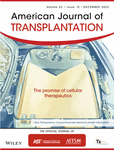
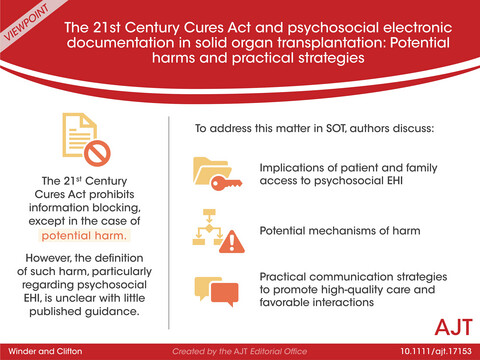
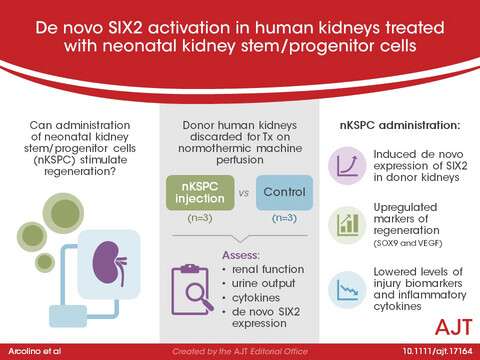

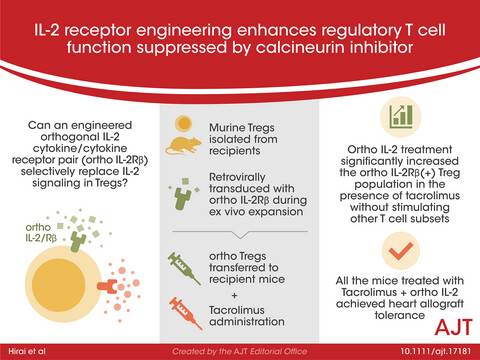

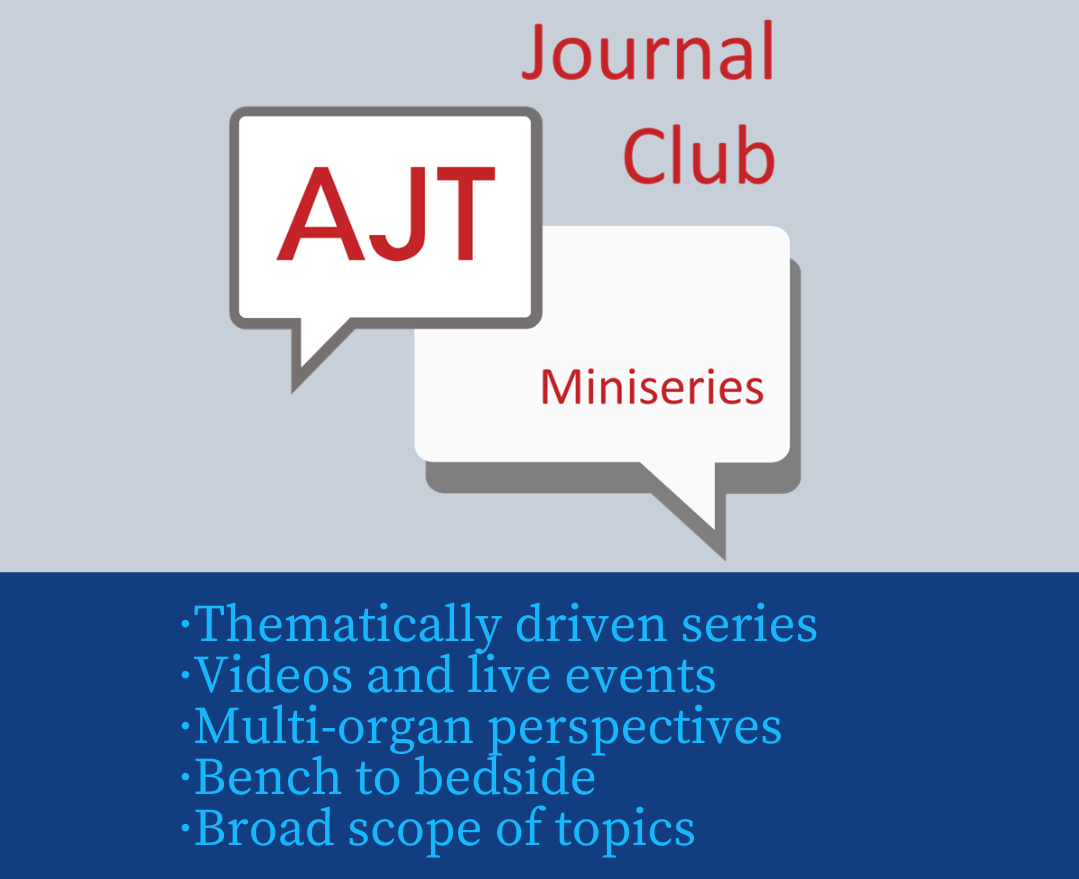


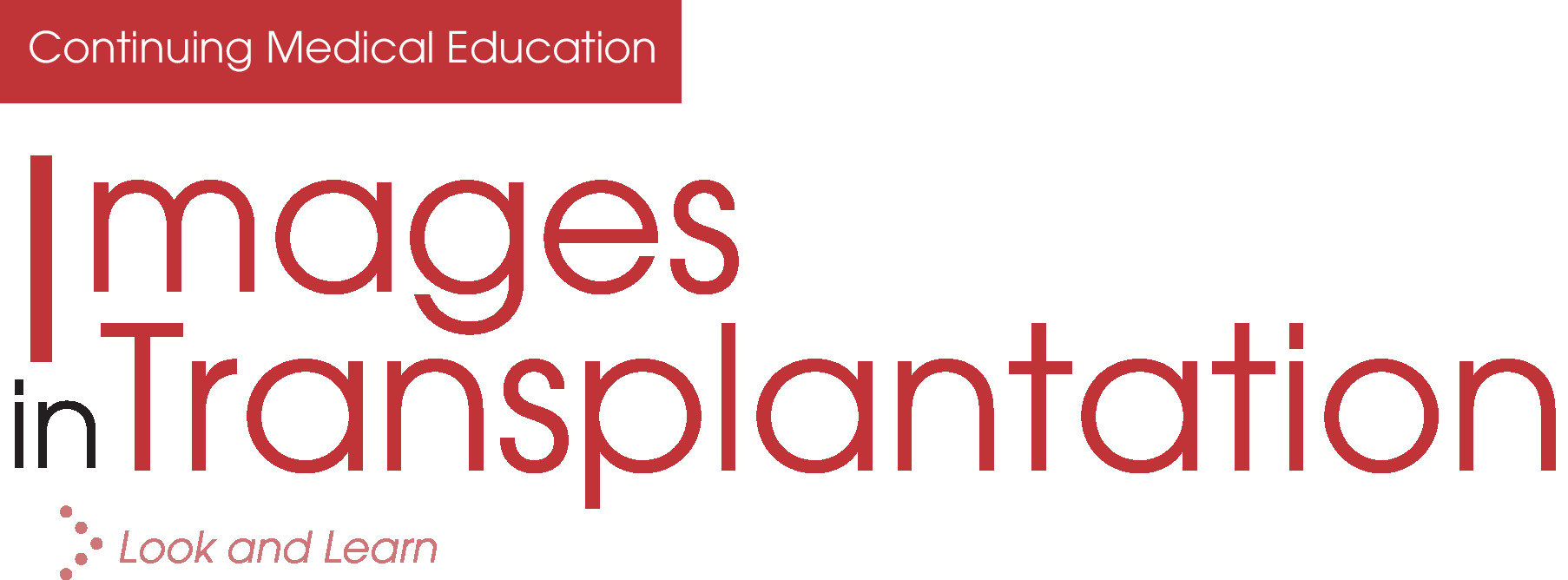
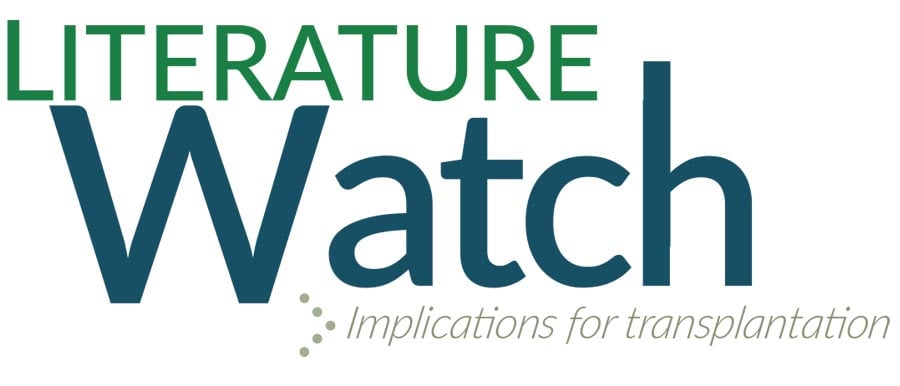
.jpg)
